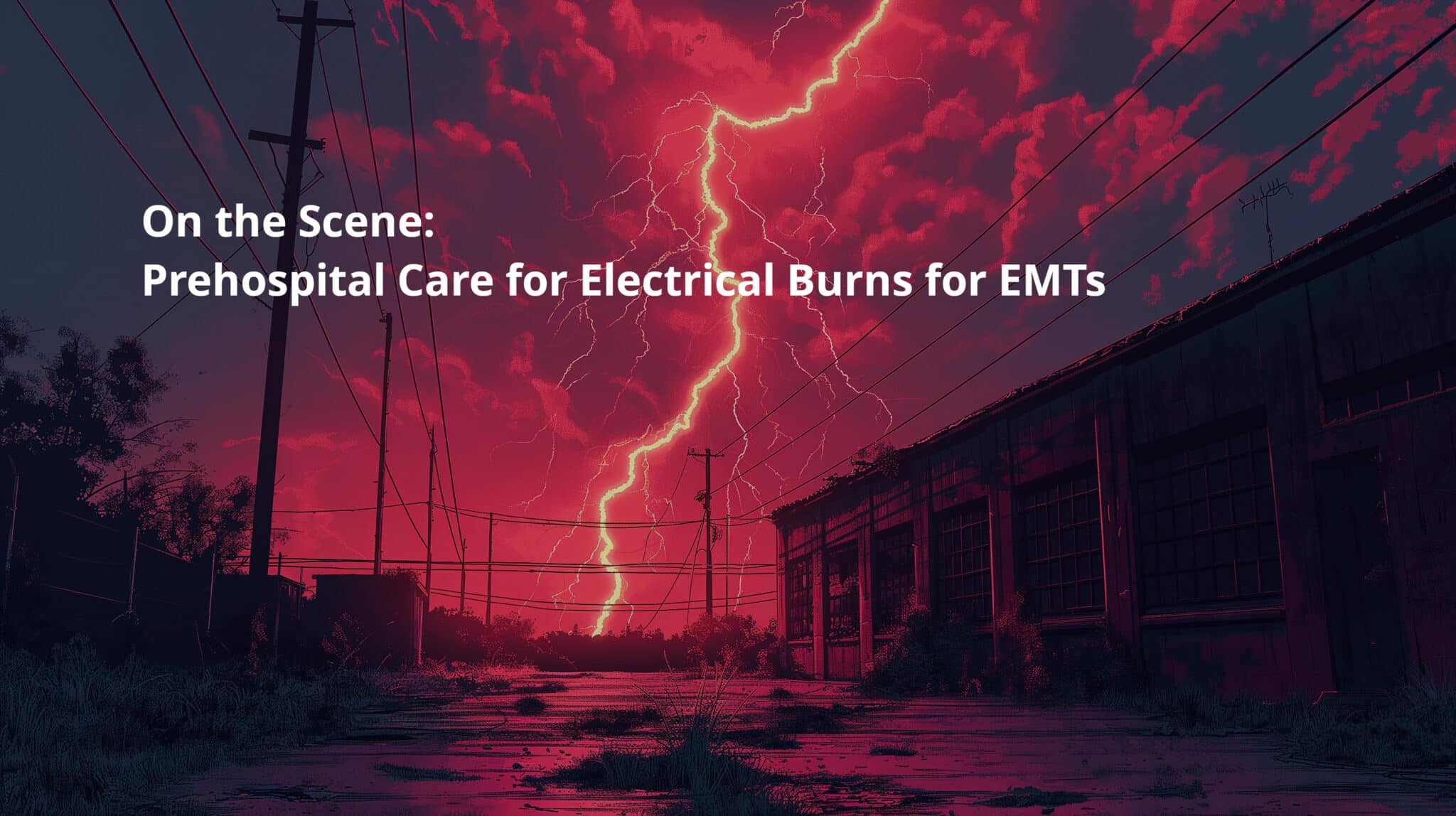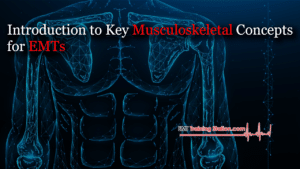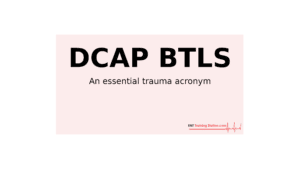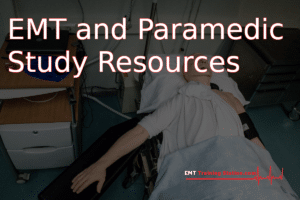In the world of emergency medical services, encountering victims of electrical burns presents a unique set of challenges. As a veteran emergency medical technician (EMT), I’ve seen firsthand the critical importance of prompt and effective prehospital care in these situations. Electrical burns, often invisible yet dangerously profound, require a nuanced approach combining swift action with a deep understanding of their complex nature.
This comprehensive guide aims to share the wealth of knowledge gained from years of experience in the field. It’s tailored to provide fellow EMTs, first responders, and even bystanders with the essential insights and practical steps necessary to manage these potentially life-threatening injuries effectively. From recognizing the subtle signs of electrical burns to executing advanced field care techniques, each section of this article is infused with real-world scenarios and expert tips to ensure the best possible outcomes before the hospital doors even open.
As we delve into the specifics of prehospital care for electrical burn victims, remember: the knowledge and actions in these initial moments can be the difference between a full recovery and lasting complications. Let’s embark on this educational journey together, enhancing our skills and readiness to face these emergencies with confidence and competence.
Field Insights: Recognizing the Signs of Electrical Burns
As an emergency medical technician, I’ve responded to numerous calls involving electrical burns. These injuries, often more complex than they appear, can be deceiving to the untrained eye. Recognizing the signs early is crucial for effective management and can significantly impact the patient’s outcome.
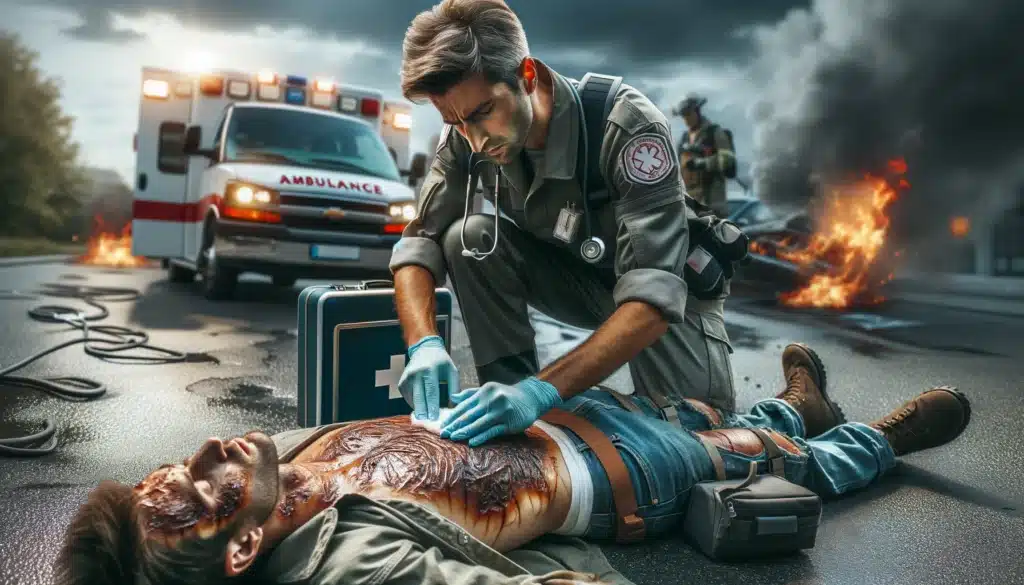
Hidden Dangers and Visible Clues
Unlike thermal burns, electrical burns can cause significant internal damage while leaving minimal external signs. The entry and exit wounds are key indicators, but they can be small or hidden under clothing. As first responders, we’re trained to look for these subtle clues. Entry wounds may appear as small, charred areas on the skin, while exit wounds, generally larger and more destructive, are found where the electricity leaves the body.
Systemic Effects: Beyond the Burn
Electrical burns often come with a host of systemic effects. The electrical current can disrupt normal heart rhythms, leading to arrhythmias or cardiac arrest. Neurological effects are also common, ranging from confusion and disorientation to seizures. As EMTs, we’re always prepared to address these life-threatening complications alongside the burns.
Assessing the Severity
The severity of an electrical burn depends on several factors: the type of current (AC or DC), voltage, the pathway of the current through the body, the duration of contact, and the victim’s overall health. High-voltage injuries are particularly perilous, often resulting in deep tissue damage and requiring specialized care.
Firsthand Experience: A Case Study
I recall a particular incident where a young man suffered an electrical burn from a high-voltage line. He appeared relatively unharmed at first glance, with small entry and exit wounds. However, his confusion and labored breathing hinted at deeper complications. We immediately initiated cardiac monitoring, which revealed arrhythmias. His prompt transfer to a specialized burn center was vital to his recovery.
It would have been easy to simply treat this patient as a typical burn victim. However, remember that electricity affects more than just the skin. It disrupts the electrophysiology of the patient as well.
Risk Assessment and Safety Protocols: Ensuring Responder and Victim Safety
In the realm of emergency medical services, especially when dealing with electrical burn incidents, the safety of both the responder and the victim is paramount. As a veteran EMT, I’ve learned that risk assessment and adherence to safety protocols are not just guidelines; they are lifesavers. Here’s how we approach safety in these high-risk situations:.
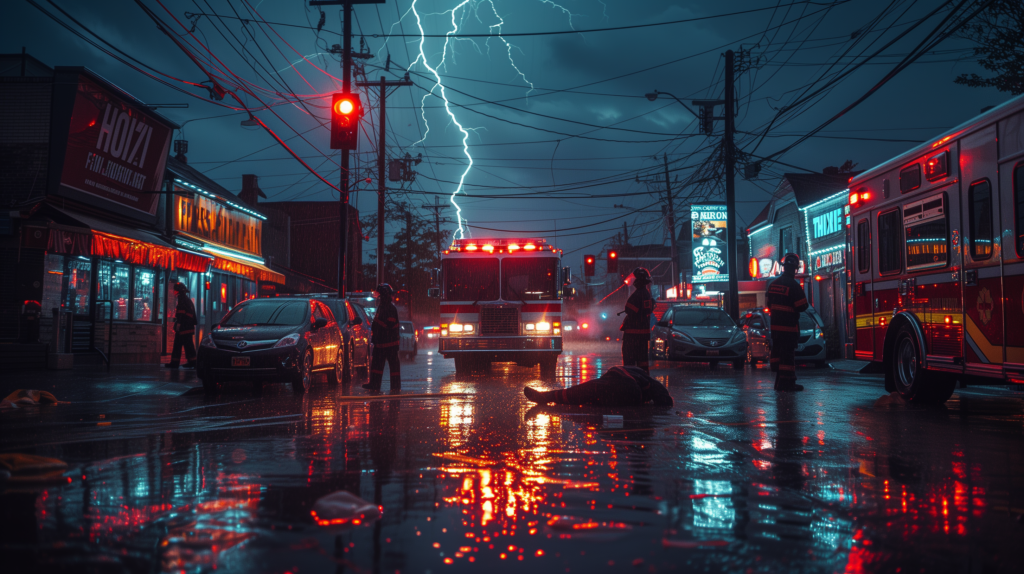
Initial Scene Assessment for Potential Hazards
Our approach to an electrical burn scene is methodical and cautious. The first step is always to assess for ongoing electrical hazards. This includes identifying live wires, assessing the stability of the environment, and determining the safety of approaching the victim. We never rush in; ensuring the scene is secure is a non-negotiable part of our protocol.
Using Appropriate Personal Protective Equipment (PPE)
We equip ourselves with the necessary PPE, which includes insulated gloves, protective eyewear, and flame-resistant clothing. In situations with high-voltage lines, we coordinate with utility personnel to ensure power is disconnected before approaching the patient. This gear not only protects us but also ensures we can safely assist the victim.
Collaboration with Other Emergency Services
Effective management of electrical burn scenes often requires collaboration with fire departments, police, and utility companies. We work together to secure the area, ensuring that it’s safe for medical intervention. This teamwork is crucial for a successful and safe response.
Educating the Public and Bystanders
Part of our role also involves educating bystanders and the public on the dangers of electrical burn scenes. We instruct them to maintain a safe distance and avoid any actions that could exacerbate the situation. This education is vital, as it helps prevent additional injuries and allows us to focus on the victim.
Continuous Training and Education
Regular training in electrical hazard recognition and safety protocol adherence is part of our ongoing professional development. This education ensures that we are always prepared to handle these complex and dangerous situations with the highest level of expertise.
Safety in electrical burn incidents is not just about the immediate response; it’s about creating an environment where effective medical care can be safely delivered. This focus on risk assessment and safety protocols is integral to our work as EMTs and is crucial to protecting both ourselves and those we are sworn to help.
Initial Response Tactics: On-Site Management by an EMT
When an emergency call for an electrical burn comes in, every second counts. As a seasoned EMT, I’ve developed a systematic approach to managing these situations effectively at the scene. Here’s an insight into the initial response tactics that are crucial in the critical moments following an electrical burn injury.

Rapid Assessment and Immediate Care
Once the scene is secured, we quickly assess the victim. This assessment includes checking for responsiveness, breathing, and circulation. If the victim is unresponsive, CPR is initiated immediately. For responsive victims, we quickly look for entry and exit wounds while also monitoring for signs of internal injuries, such as irregular heartbeats or neurological impairments.
Handling Specific Electrical Burn Injuries
Electrical burns require specific first-aid measures. Our approach includes:
- Covering burn wounds with sterile, non-adhesive dressings.
- Treating shock by keeping the victim warm and lying down.
- Avoiding the application of ointments or ice, which can exacerbate the injury,.
- Monitoring vital signs continuously, especially for signs of cardiac distress.
- Communicating with the Victim
Effective communication is key. We reassure the victim, explaining our actions to keep them calm. This rapport can also provide valuable information about the incident, aiding in our assessment and treatment decisions.
Types of Electrical Burn Injuries and How to Recognize Them
Arc Burns (True Burns)
These are some of the most severe electrical injuries we encounter. They occur when electricity travels from a high to a low resistance point, often penetrating deep into the body. This can cause significant internal damage, which isn’t always immediately apparent. In the field, we look for entry and exit wounds, but remember, the damage can be much more extensive internally. Arc burns can happen even without direct contact with the electrical source, and the heat generated can be extreme, sometimes causing secondary injuries due to blasts or falls.
Flash Burns
These injuries are related to arc burns but are more surface-level. They happen when the skin is exposed to the intense heat of an electrical arc. The temperatures can be extraordinarily high, but thankfully, the electrical current doesn’t usually penetrate the body. As an EMT, I’ve seen these present as widespread skin burns that require immediate and careful treatment to prevent infection and further damage.
Flame Burns
These are secondary burns caused when an electrical event ignites clothing or nearby materials. In the chaos of an electrical injury scene, it’s crucial to quickly identify the source of the burn. If it’s electrical, we’re on the lookout for other types of electrical injuries that might not be immediately visible.
Oral Burns
More common in children, these injuries are usually caused by biting electrical cords. The electricity travels through the mouth, causing burns, swelling, and sometimes more severe internal injuries. In these cases, quick transport to a hospital is vital, as internal damage can be significant.
Preparing for Transport
As we stabilize the victim, preparations for transport are made. In cases of high-voltage electrical burns, we prioritize rapid transport to specialized burn centers. Coordination with the receiving facility begins even before we leave the scene, ensuring they are ready for the victim’s arrival.
Through these initial response tactics, EMTs play a pivotal role in the prehospital management of electrical burns. Our actions set the foundation for the subsequent medical care the victim will receive, highlighting the importance of expertise and composure in these critical moments.
Advanced Prehospital Interventions: Techniques and Tools for Emergency Care
Dealing with electrical burns in a prehospital setting involves more than basic first aid; it often requires advanced interventions. Drawing from my extensive experience as an emergency medical technician, I’ll share some of the advanced techniques and tools we use to manage these complex injuries effectively.
Rapid Assessment and Advanced Life Support
Upon arrival at the scene, our immediate focus is on assessing the victim’s airway, breathing, and circulation. In cases of severe electrical burns, victims may require advanced life support, which includes securing the airway and providing assisted ventilation. We’re trained to perform these interventions swiftly to stabilize the patient’s condition.
Managing Cardiac Arrhythmias
Electrical injuries can cause cardiac arrhythmias, a critical condition where the heart beats irregularly. We use portable electrocardiogram (ECG) machines to monitor heart rhythms and are equipped to administer life-saving interventions like defibrillation or medication administration to stabilize the heart rhythm.
IV Fluids and Pain Management
Intravenous (IV) fluids are essential in the treatment of electrical burns, especially for victims who have suffered significant fluid loss due to tissue damage. Administering pain relief is also a crucial aspect of our care. We use specific protocols to provide effective pain management while ensuring the safety of the patient.
Specialized Burn Care
For electrical burn wounds, we employ specialized dressings that can help in wound healing and prevent infection. These dressings are designed to be non-adhesive and to provide a moist environment, which is crucial for burn recovery.
Preparing for Rapid Transport
Part of our advanced intervention includes preparing the victim for rapid transport to a medical facility. This preparation involves not only medical stabilization but also careful documentation of the victim’s condition and the care provided, ensuring a seamless transition to hospital-based treatment.
Through these advanced prehospital interventions, we, as EMTs, bridge the critical gap between the incident scene and the hospital, providing life-saving care that significantly improves the chances of recovery for electrical burn victims.
Preparation for Hospital Transfer: Coordination and Continuity of Care

As an emergency medical technician, I understand that our role extends beyond providing immediate medical care at the scene. A crucial aspect of managing electrical burn cases is preparing for and coordinating the victim’s transfer to a hospital. This process is vital for ensuring continuity of care and can significantly impact the patient’s recovery journey.
Effective Communication with Receiving Facilities
The first step in preparing for hospital transfer is to establish effective communication with the receiving medical facility. This involves providing detailed information about the patient’s condition, the treatment administered at the scene, and any specific needs that the hospital staff should be aware of. This communication ensures that the hospital team is prepared to provide immediate and appropriate care upon the patient’s arrival.
Detailed Documentation for Seamless Handover
Accurate and thorough documentation of the patient’s condition, treatment provided, and response to that treatment is essential. This documentation is handed over to the hospital staff, providing them with a complete picture of the patient’s prehospital care. It helps in making informed decisions for the next steps in treatment.
Ensuring Patient Stability During Transport
Maintaining the patient’s stability during transport is a priority. This involves continuous monitoring of vital signs, managing pain, and addressing any changes in the patient’s condition. Our ambulances are equipped with advanced medical equipment to provide ongoing care during the journey to the hospital.
Collaboration with Hospital Staff
Upon arrival at the hospital, we collaborate closely with the medical team, providing a verbal briefing along with the written documentation. This teamwork ensures a smooth handoff and helps the hospital staff seamlessly continue their care.
Training and Preparedness for Complex Transfers
To ensure we are prepared for the complexities of transferring electrical burn victims, we undergo regular training. This training focuses on scenarios that might arise during transport and how to effectively manage them, ensuring that we are always ready to provide the best possible care.
The preparation for hospital transfer is a critical component of the prehospital management of electrical burns. It requires not only medical expertise but also effective communication and coordination skills. As EMTs, we play a pivotal role in ensuring that the transition from prehospital to hospital care is as smooth and efficient as possible, directly impacting the patient’s recovery process.
Sources:
Related Posts

Michael
Hey there! It's so great to meet you! My name is Mike, and I am thrilled to be able to share my extensive EMS experience with you. I am currently working as an EMT in Tucson and am also an EMT instructor at Pima Community College. I am passionate about teaching future first responders, and I created this site specifically to assist anyone interested in pursuing a career in EMS.
It's possible that you are here because you're considering becoming an EMT, or maybe you are already one. Throughout my career, I have tested out countless pieces of EMT-related gear and equipment, and I want to help guide you in making smart decisions when it comes to selecting the best gear for your needs.
I am here to offer my support, so feel free to reach out if there is anything you need. Let's work together to make sure you have the tools you need to excel in this rewarding field!
Share this:
- Click to share on Facebook (Opens in new window)
- Click to share on LinkedIn (Opens in new window)
- Click to share on X (Opens in new window)
- Click to share on Reddit (Opens in new window)
- Click to share on Pinterest (Opens in new window)
- Click to share on Pocket (Opens in new window)
- Click to share on Telegram (Opens in new window)
- Click to share on Mastodon (Opens in new window)
- Click to print (Opens in new window)
- Click to email a link to a friend (Opens in new window)

